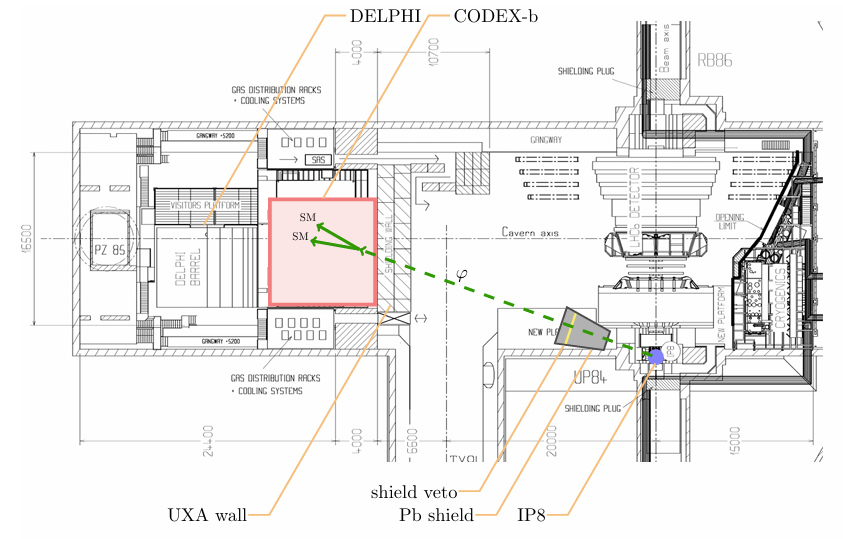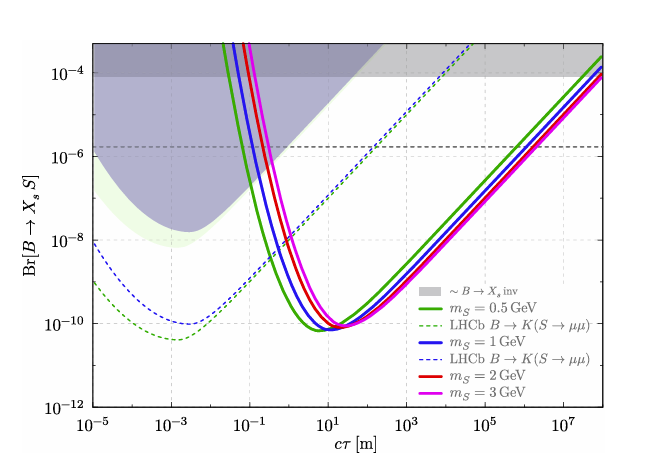Analysis of Long-Lived Particle Properties with Multiple Detectors
Overview
This project investigated long-lived particles (LLPs) in beyond-Standard-Model scenarios, focusing on hidden-sector dark photons and axion-like particles (ALPs). I developed a simulation pipeline linking event generation, decay kinematics, and detector acceptance to evaluate the discovery potential of the proposed CODEX-b far detector at the LHC. The pipeline reproduced and generated CODEX-b sensitivity plots in the mass–lifetime parameter space.
Theoretical Preparation & Experimental Report Analysis
To establish a solid foundation, I studied essential quantum field theory and the principles of LLP detection. I conducted a critical review of the CHARM fixed-target experiment (400 GeV proton–copper collisions), analyzing its methodology and exclusion limits on neutral LLPs. These results provided a benchmark for validating modern simulations.
Simulation Framework
I employed Pythia8 to simulate proton–proton collisions at LHC energies, generating LLP momentum spectra and decay-length distributions under benchmark BSM scenarios. Detector acceptance studies focused on the proposed CODEX-b far detector, a 10×10×10 m³ decay volume near LHCb. I modeled its geometry and shielding, applied kinematic cuts, and estimated the probability of LLP decays within the fiducial volume. Monte Carlo methods were used to propagate decay vertices, and in collaboration with colleagues using Geant4, detector response was incorporated to project observable yields. Sensitivity curves for dark photons and ALPs were derived.


My Contributions
- Conducted a critical review of the CHARM fixed-target experiment, examining methodology and exclusion bounds on long-lived particles (LLPs) to establish a benchmark for subsequent studies.
- Utilized the Pythia8 event generator to simulate proton–proton collisions at LHC energies, producing LLP kinematic spectra and decay-length distributions under benchmark beyond standard model (BSM) scenarios.
- Investigated the geometry and shielding of the proposed CODEX-b far detector at LHCb, assessed its acceptance for LLP decays within the 10×10×10 m³ fiducial volume, and evaluated its potential to extend sensitivity beyond existing experiments.
- Applied Monte Carlo methods to compute spatial decay distributions and, in collaboration with colleagues using Geant4 for detector response, derived sensitivity curves for models including dark photons and axion-like particles (ALPs), demonstrating CODEX-b's complementary reach in the LLP parameter space.
Results & Outlook
The simulation pipeline successfully reproduced CHARM exclusion bounds, confirming the validity of our modeling. Applied to CODEX-b, it demonstrated unique coverage in the mass–lifetime plane, particularly for intermediate lifetimes beyond the reach of prompt and beam-dump experiments. Dark photon sensitivity was extended in the MeV–GeV range, with complementary coverage for ALPs. Future work includes systematic background modeling and extension to additional BSM scenarios.